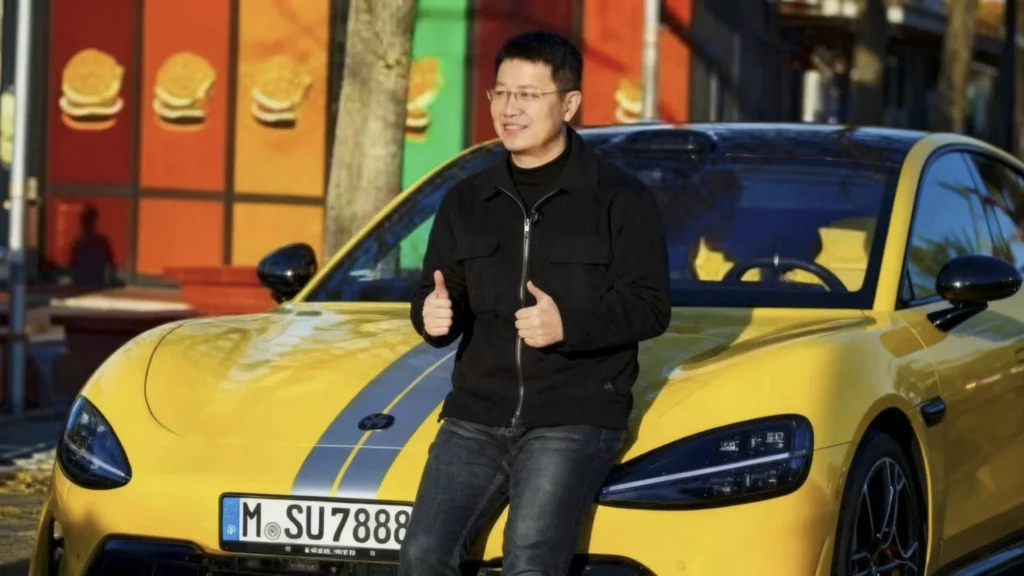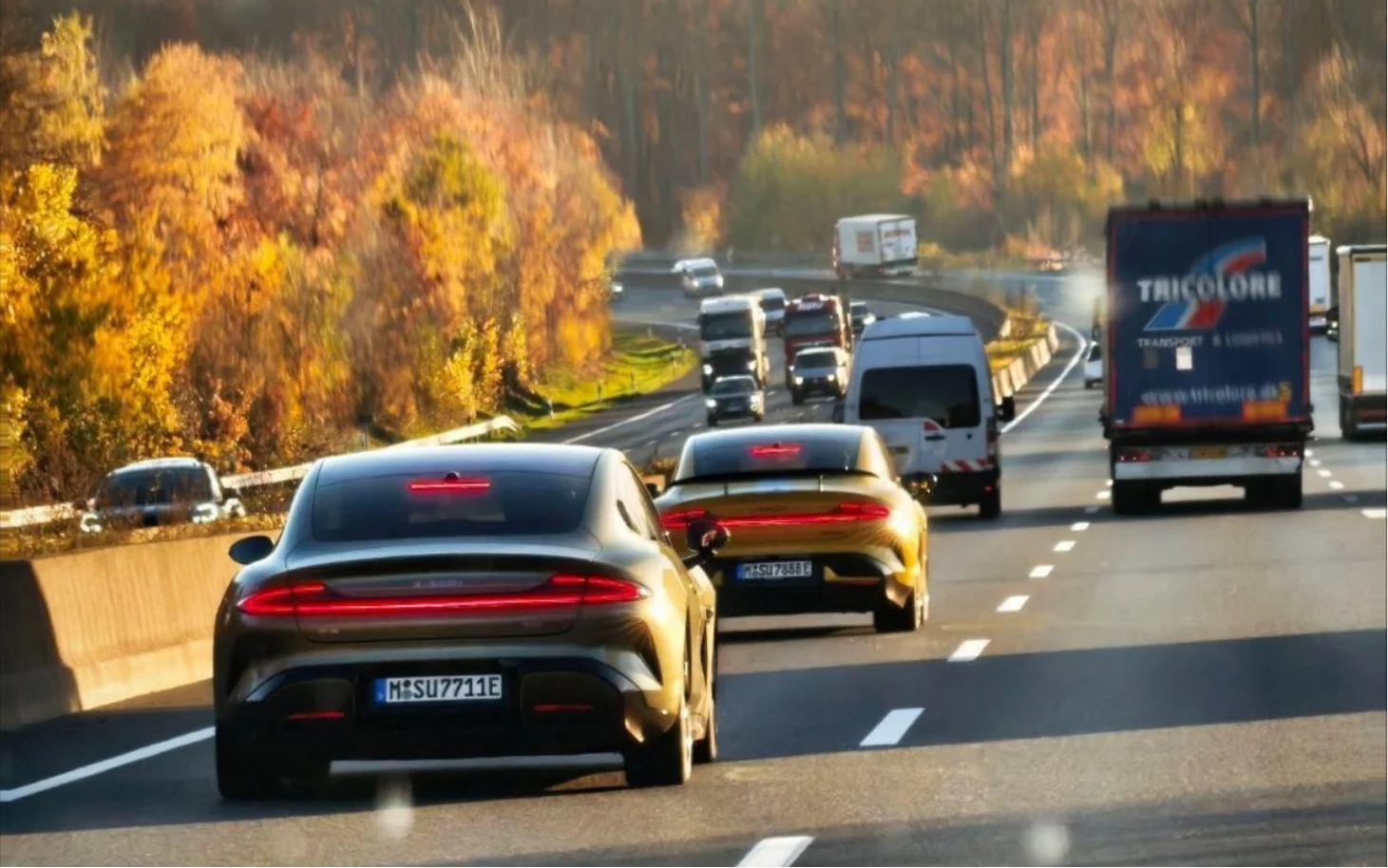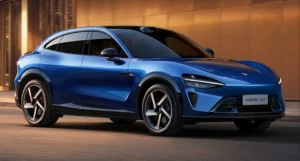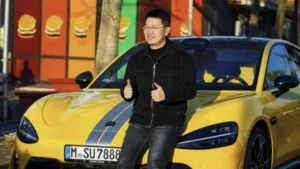Xiaomi SU7 Ultra’s European Debut: Test Drive & 2027 Launch

Xiaomi SU7 Ultra: The Chinese Tech Giant’s European Conquest Ignites!
Xiaomi, a name synonymous with cutting-edge smartphones and smart home gadgets, is seriously revving its engines for a major automotive play. Their sleek electric vehicle, the SU7 Ultra, recently took a 800km spin across Germany, piloted by Xiaomi President Lu Weibing himself. This isn’t just a test drive; it’s a powerful declaration of intent, signaling Xiaomi’s ambitious plans to hit the European market by 2027. Let’s dive into what makes this electric beast tick and what it means for the future of mobility.
A Marathon Drive on German Soil
On November 6th, Lu Weibing embarked on a significant two-day journey, covering roughly 800 kilometers. The route, stretching from Berlin to Hamburg and then on to Frankfurt, was more than just a scenic tour. It was a crucial real-world test of the SU7 Ultra’s endurance and its compatibility with European infrastructure. Xiaomi’s aim here is clear: to thoroughly understand and adapt its EV offerings to the specific demands of the continent before the official launch. The image accompanying @YesWeCar1965‘s tweet shows a beaming Lu Weibing beside the bright yellow SU7 Ultra, a powerful visual testament to their confidence in the vehicle.
During his drive, Lu paid close attention to Germany’s public charging network, noting it as “generally well-developed.” This is a vital piece of feedback, as seamless charging is non-negotiable for EV success in Europe. What’s even more telling is that the SU7 Ultra didn’t go unnoticed. At charging stations, curious onlookers recognized the car by name, indicating that Xiaomi’s automotive buzz is already building, even ahead of any official European marketing push.

Unleashing the Beast on the Autobahn
One of the most electrifying moments of the test drive? Experiencing the SU7 Ultra on the legendary German Autobahn, a place where speed limits are often just a suggestion. Lu Weibing reported pushing the SU7 Ultra to a blistering 260 km/h, maintaining impressive stability. This isn’t just about raw speed; it highlights the vehicle’s high-performance capabilities, a fusion of advanced technology and smart aerodynamic design.
Decoding the SU7 Ultra’s Prowess
The Xiaomi SU7 Ultra is far from your average electric car. This top-tier version of Xiaomi’s debut automotive effort is packing some serious heat. Under the hood (or rather, under the floor), you’ll find a 93.7 kWh CATL Qilin II battery, operating at a hefty 897 volts. This setup is good for an estimated CLTC range of 630 km. But where it truly shines is in its acceleration and top speed.
- 0 to 100 km/h: A mind-blowing 1.98 seconds.
- Top Speed: A staggering 350 km/h.
These figures put the SU7 Ultra squarely in contention with hyper-EVs like the Porsche Taycan Turbo GT and even the Rimac Nevera. Adding to its performance credentials, the SU7 Ultra set a blistering Nürburgring Nordschleife lap time of 7:04.957 minutes on April 1, 2025, earning it the title of the fastest production electric vehicle in its category.

Aerodynamics Meet Automotive Art
It’s not just about the numbers; the SU7 Ultra is a stunner. Measuring 5,260 mm in length, 2,064 mm in width, and 1,406 mm in height, its design is a masterclass in blending form and function. Significant aerodynamic enhancements, such as large front air intakes, a prominent rear spoiler, and an aggressive diffuser, work together to generate up to 2,145 kg of downforce. This is where Xiaomi’s consumer tech background meets elite automotive engineering.
Europe: A Calculated Expansion Strategy
Xiaomi’s entry into the EV arena isn’t a hasty decision. Since announcing their automotive division in March 2021 with a massive 10 billion yuan (around $1.4 billion) investment, they’ve been strategically laying the groundwork. The German test drive follows crucial initial tests and, significantly, full regulatory approval for the SU7 Ultra to roam European roads. A unit was even registered in Munich with the license plate “M SU7088E,” a clever nod to “M” for Munich and “Mi” for Xiaomi.
Lu Weibing has made it clear that European expansion is a priority, but it’s on a defined timeline. Back in August 2025, he indicated that the automotive division anticipates reaching profitability in the second half of 2026. This financial milestone is seen as essential before the global rollout. Despite a reduction in quarterly operating losses to 300 million yuan ($41.8 million), Xiaomi has poured over 30 billion yuan ($4.18 billion) into its car division, underscoring their long-term commitment.

Charting the Course: Key Milestones
- March 2021: Xiaomi announces its entry into the EV market with significant investment.
- July 2025: SU7 Ultra receives full regulatory approval for European roads.
- August 2025: Lu Weibing targets profitability for the automotive division by H2 2026.
- November 2025: Extensive 800km test drive of the SU7 Ultra in Germany.
- 2027: Planned official launch of Xiaomi EVs in the European market.
Navigating the Road Ahead: Challenges and Opportunities
Let’s be real, breaking into the European EV market won’t be a walk in the park. The competition is fierce, with established giants like Tesla, Volkswagen, and Porsche, plus other Chinese contenders like BYD, all vying for a piece of the pie. European regulations regarding emissions, safety, and data are stringent and will require meticulous adaptation from Xiaomi. The recent recall of 116,887 standard SU7 units in China due to safety defects in September 2025 serves as a stark reminder of the critical importance of quality and compliance.
However, the opportunities are just as vast. The demand for electric vehicles across Europe is skyrocketing, fueled by government incentives and a growing environmental consciousness. Xiaomi’s existing reputation as an innovative and relatively affordable tech brand could be a major advantage, especially if they can deliver a premium EV experience without the premium price tag.
The Electric Horizon Looks Bright
Lu Weibing’s extensive test drive in Germany is more than just a performance check; it’s a loud and clear statement of intent. Xiaomi is demonstrating that it possesses the technological chops, the strategic vision, and the sheer audacity to compete head-on in one of the world’s most demanding automotive landscapes. With a 2027 European launch target and a 2026 profitability goal, they’re building a solid foundation for a global automotive future.
As 2027 approaches, it’ll be fascinating to watch how Xiaomi masterfully blends its consumer tech DNA with the complexities of the automotive industry. The SU7 Ultra, with its audacious design and electrifying performance, could very well be the vehicle that propels Xiaomi from a tech powerhouse to a bona fide pioneer in the electric mobility revolution. For car fans and investors alike, Xiaomi’s European journey is shaping up to be one heck of a ride.







